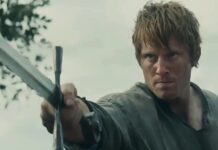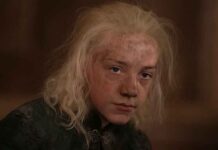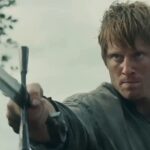The penultimate season of Game of Thrones was filled with shocking moments made possible by the show’s talented cast and creative team, which includes a visual effects crew that has brought home a Primetime Emmy Award for their work almost every season the series has aired.
Among the studios tasked with bringing the world of Westeros and surrounding regions to life in Game of Thrones is Zoic Studios, a visual-effects company based in Culver City, California, with a long list of contributions to some of television’s most popular shows. Along with developing visual effects for Marvel’s The Defenders and Iron Fist series on Netflix — and HBO’s vampire drama True Blood before that (among a long list of other shows) — Zoic cooked up some of the VFX magic that made Season 7 of Game of Thrones one of the most popular seasons of one of the most popular shows of all time.
Digital Trends spoke with Zoic VFX Supervisor Mat Krentz, who led the studio’s team on Game of Thrones, about some of the key elements — and moments — from the recent season that his team helped bring to the screen.
(Note: Multiple season 7 spoilers lurk below. If you’ve yet to see the latest season, proceed at your own risk!)
Digital Trends: Looking at the visual-effects highlight reel you released recently, there’s a lot of focus on creating the world of Westeros beyond the practical set. What sort of guidance do you get when you’re doing that kind of literal world-building?
Mat Krentz: Joe Bauer and Steve Kullback [Game of Thrones visual effects supervisor and producer, respectively] will do a lot of pre-work before introducing some of the shots, so they’ll have the art department create concept art and have a vision ready to go, and then there’s always a lot of prep work to do before they bring it to us. Once we get involved, we take what they’ve developed and try to work on top of that and enhance that. One specific thing we did this year was, any of the Winterfell scenes that they shot on set had to have a castle built, and we would do a lot of the top ups [enhancing and extending practical elements] for that. They had an idea what the castle would look like and we would take those ideas and build out a full, CG castle and place our castle in CG over the top of what they’d shot on set, and we’d work from there. That was always a cool way to start — particularly when they have something physical, pre-created on set, and you can start from that.
In some of the scenes in that VFX reel, you’re completely changing the environment around the set from a green, almost spring-like appearance to a bleak, winter version of that same environment. What sort of challenges does that present?
Over the past three or four seasons, we kept saying that winter was coming, and finally this year winter was here. So they tried to wait and see if they could get a lot of the snow practically on set, and they were shooting in Iceland and Ireland while trying to get some really wintery seasons in camera. Unfortunately, they couldn’t do that. It just never happened. So a lot of our work was done on green, lush areas, and basically we would do matte paintings over the top of that and rework the entire environment. We’d add in falling snow, and all of these layers of atmosphere in the background, making it feel like it was foggy and there were heavy amounts of clouds in the background. It was a lot of fun, and you take a lot of real-world references for what you’re doing, looking online and doing research to find out what it really does look like if there’s a giant snowstorm happening in the background of those areas.
Zooming in a bit now, the scene in which Walder Frey (David Bradley) removes a mask to reveal that he’s actually Arya Stark (Maisie Williams) was a big moment that you worked on in the Season 7 premiere. That scene easily could have slipped into a sort of campy Scooby-Doo visual, but it worked in the episode. What went into creating that scene?
That was something they tried doing on set practically, and Maisie was wearing a mask that kind of resembled David Bradley, but it wasn’t a strong enough resemblance to him and it also moved a little too rubbery. They weren’t happy with the rubbery texture and feel of it. So basically we recreated his face in 3D and added a cloth dynamic to it. We had a fully built face model with all of the necessary texture, and then we applied a silk-like cloth effect to it. So when she lifted her head in the scene and pulled off the mask, it basically had a nice, seamless, fabric-like feel instead of that rubbery feel you get when it’s a traditional mask on top of a person’s face.
The reveal of Gregor Clegane’s face a season earlier was also a big moment you and your team had a hand in creating. What can you tell us about the process there? I suspect that this particular effect might have gone through some development stages as you try to find the right balance with how far to go with the rot and the open wounds and such.
Gregor is kind of like a zombie, so the basic direction with him was that he had to look more and more decayed over time. You try on set to create that look with makeup on, but it’s never quite enough — especially with the closeups. Even through the eyeholes of his faceplate, he looked a little too life-like, a little too alive. So we basically went through rounds of concept and design evaluating how dead he looks at each point. How dead should he look? Is it too grotesque now? Is there not enough decay? So we went through several rounds of design, eventually coming up with things like the purple hue we added to his eyes to make him look more like a zombie. In the end, it looked pretty nasty — and nasty enough to live up to the concept.
Was there a particular sequence or VFX moment that you’re particularly proud of in season 7? What’s the first effect that first comes to mind when you think of your work on the show this season?
The stuff that really shines is the stuff that people don’t notice. One of the environments we worked on was Daenerys’ audience chamber in Dragonstone. It’s this massive room where her throne is, and she sits there a lot of the time. They built a portion of that set practically, but a larger portion is also CG that we built. It’s this whole 3D environment. The way the light comes from the windows and the dust particles floating in the room, it’s all stuff you might never even notice, but that’s the stuff that’s really exciting to visualize and create. It’s this huge environment that looks all real, and you imagine that they built everything, but a lot of it was created by us — which we were pretty proud of.
Season 8 of Game of Thrones is expected to premiere in late 2018 or early 2019. No premiere date has been announced by HBO as of this interview’s publication.




















![[Book Review] The Blade Itself (The First Law Trilogy) by Joe Abercrombie](https://bendthekneegot.com/wp-content/uploads/2018/01/1516047103_maxresdefault-218x150.jpg)


















